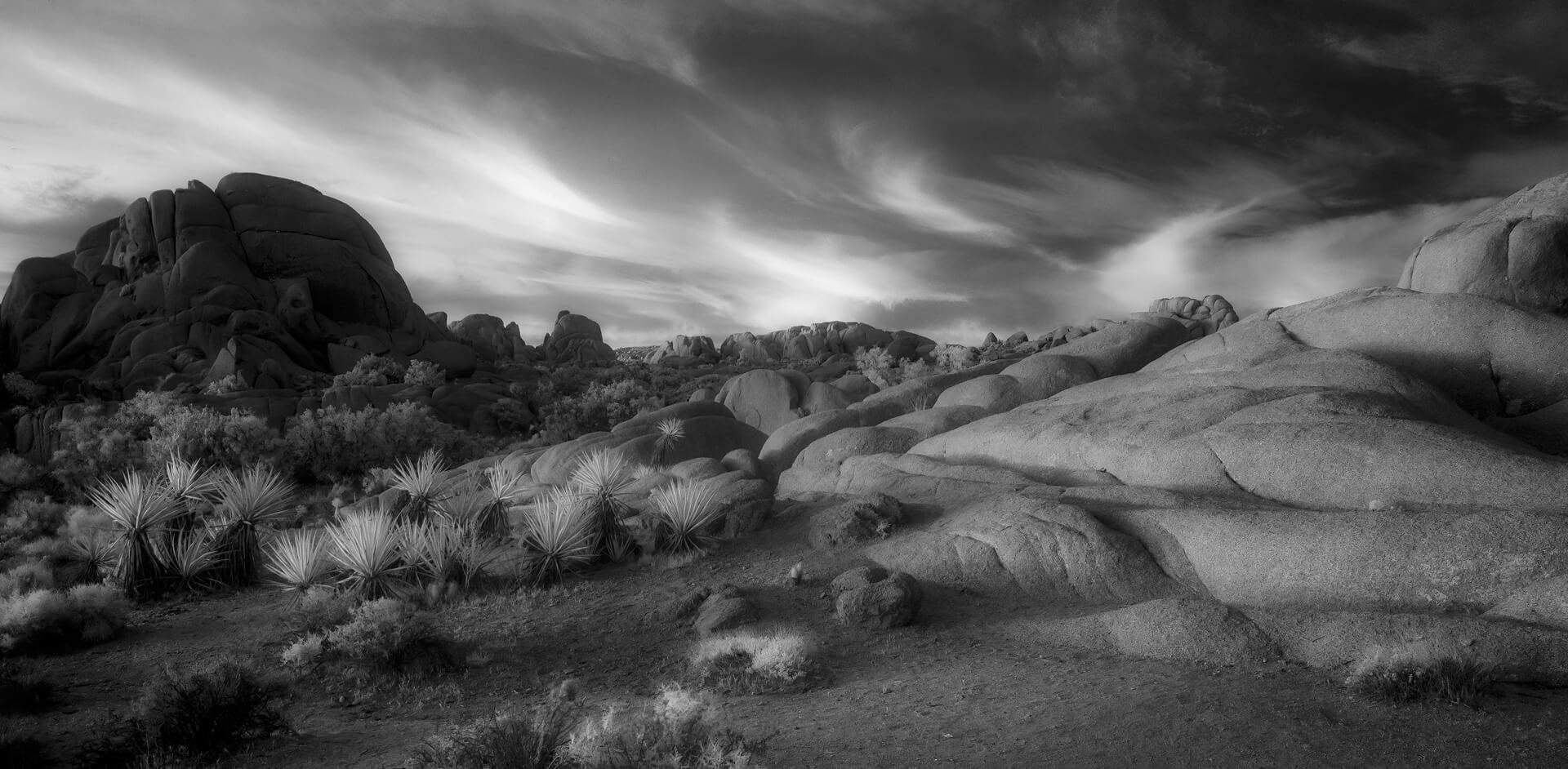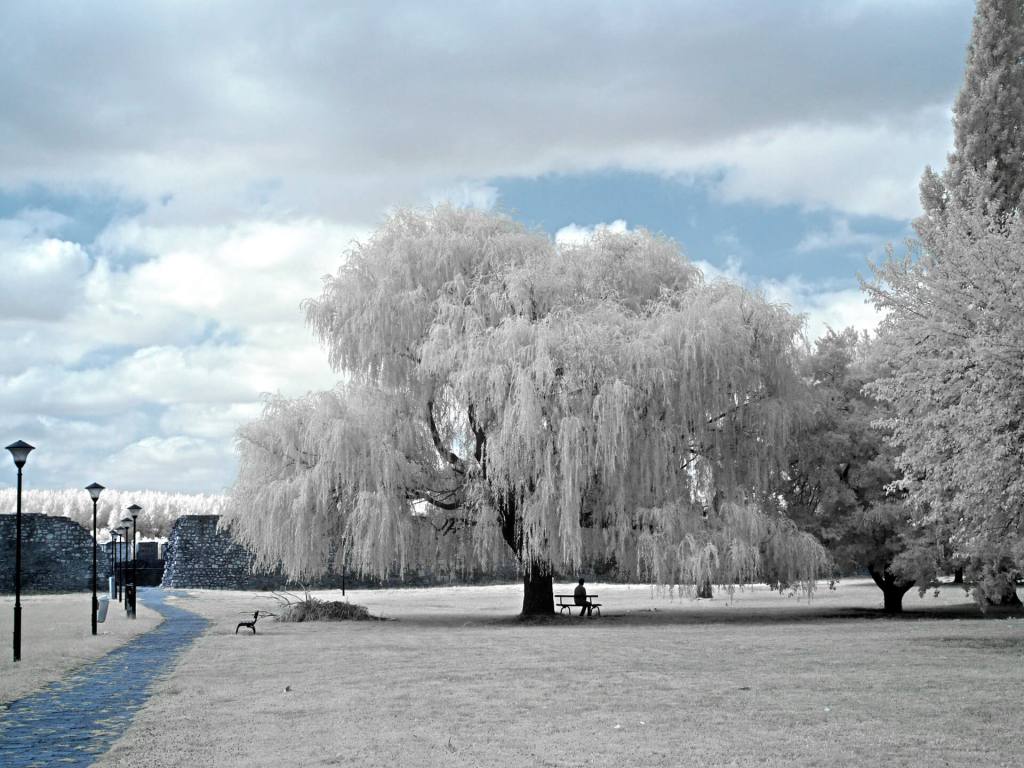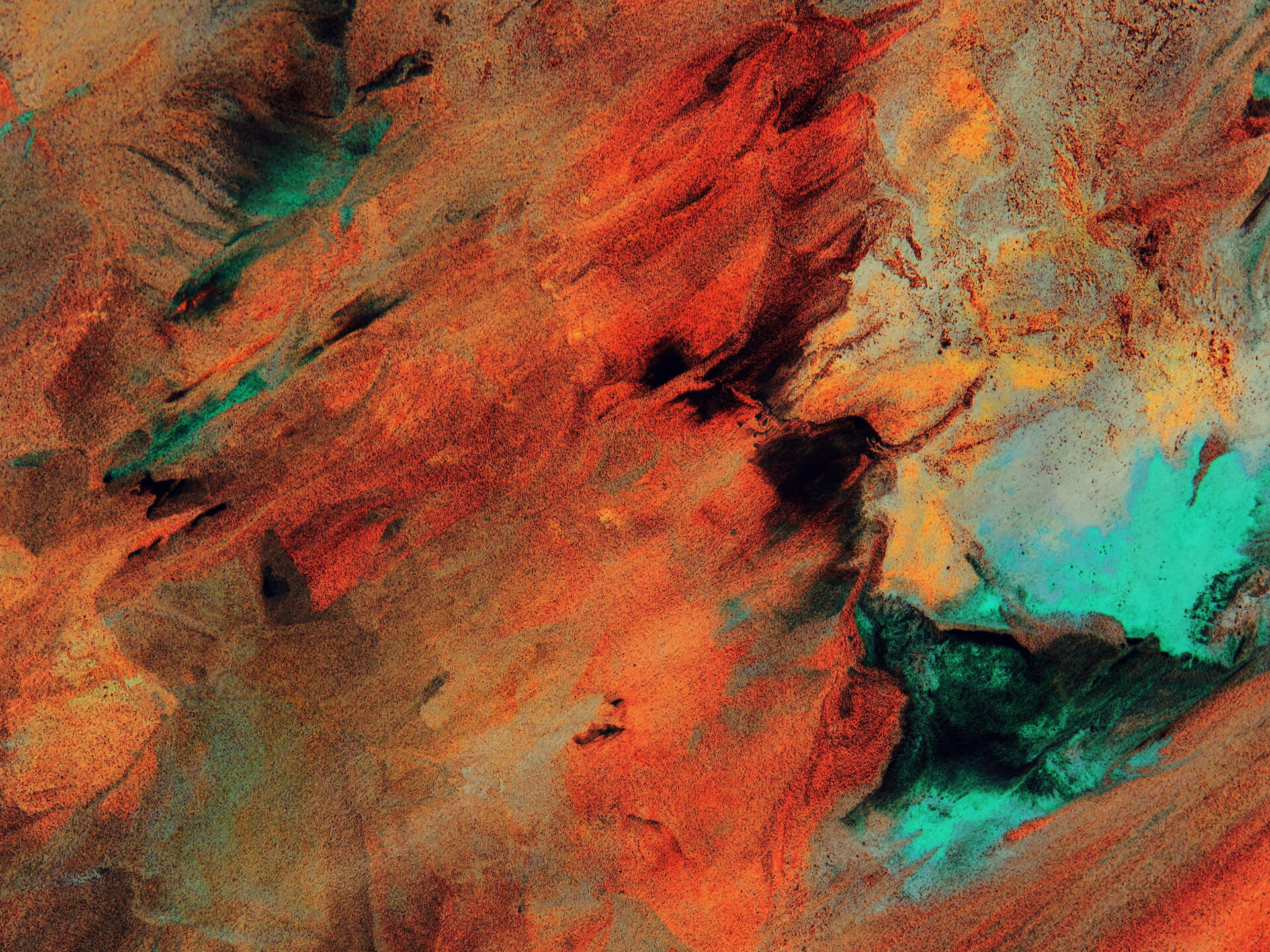DSLR Internal Cut Filter / Lowpass Filter / Hot Mirror Transmission Curves
All modern digital camera sensors come paired with an infrared and UV blocking mirror, which makes UV and IR photography very difficult without first removing this filter. We have started measuring the transmission of some of the filters we have removed during conversions and are providing them for general reference.
Knowing the transmission curve is particularly important for selecting an appropriate hotmirror filter after a full spectrum conversion. Picking a filter that is not close to the original transmission, particularly on the IR side, results in innacurate colors and problems with the white balance. If the hotmirror is matched properly though, the camera can be again used like before the conversion with the original color balances working. Knowing the transmission is also usefull for determining if your camera would benefit from using a UV filter. Most UV filters have a cutoff of around 400nm or less, if your camera already blocks these wavelengths there is no benefit to the extra filter in terms of UV blocking.
You can also use this resource to check if your camera will benefit from our two spectrum conversion.
A quick note on how to calculate the transmission of two stacked filters. If two filters are stacked, the transmission can be determined by mutliplying the transmission values of both filters for each wavelength. For example, if one filter has 50% transmission at 600nm, and another has 20% transmission, the combined transmission at 600nm would be 0.50 x 0.20 = .10, or 10%.
Nikon
 |
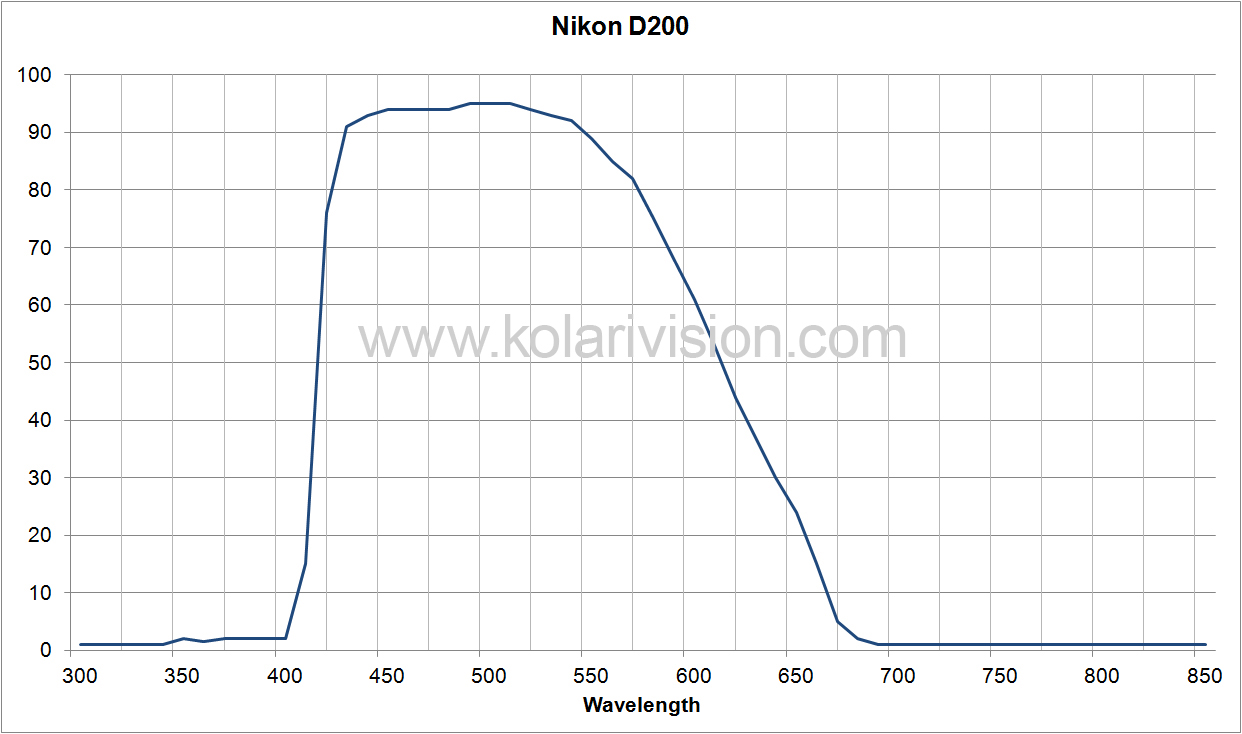 |
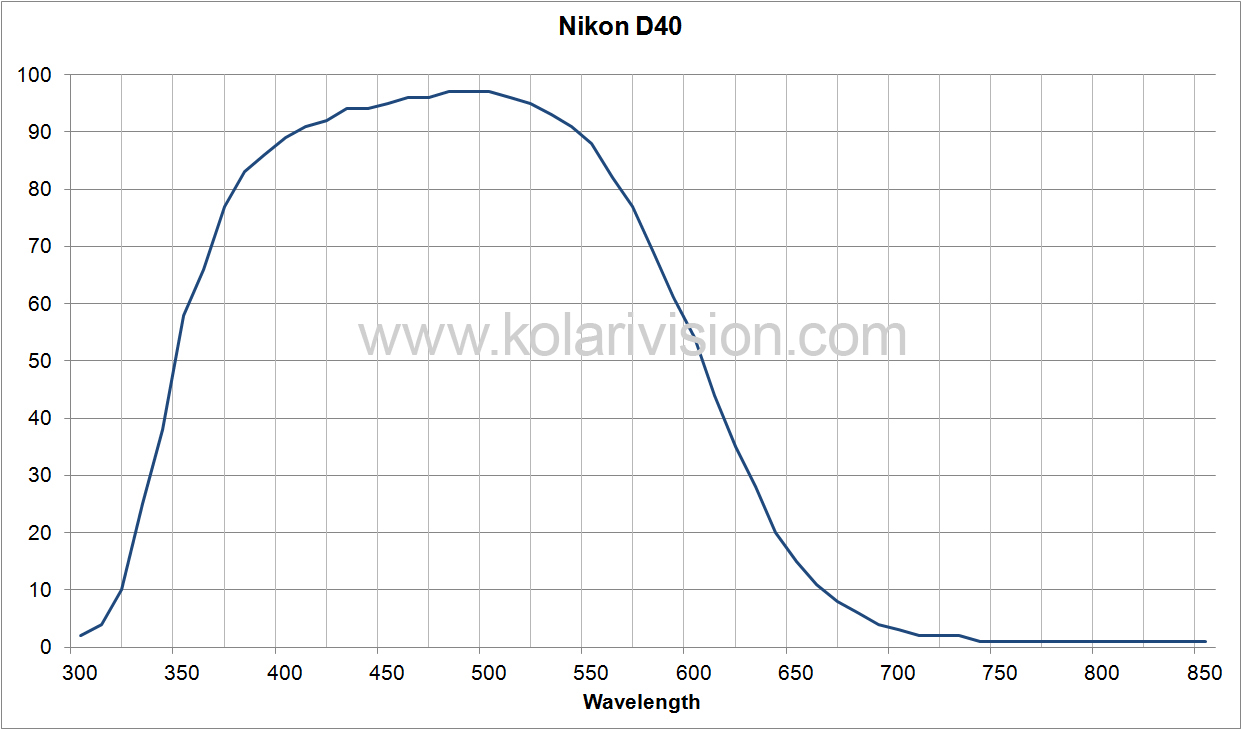 |
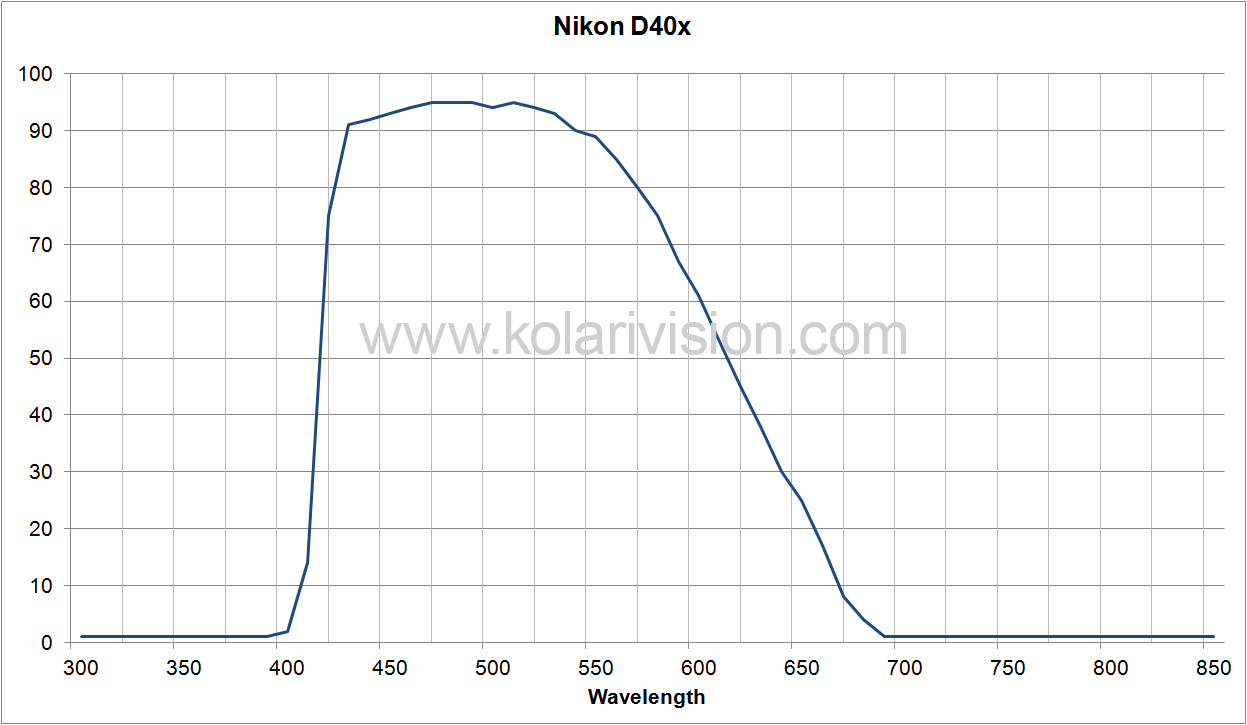 |
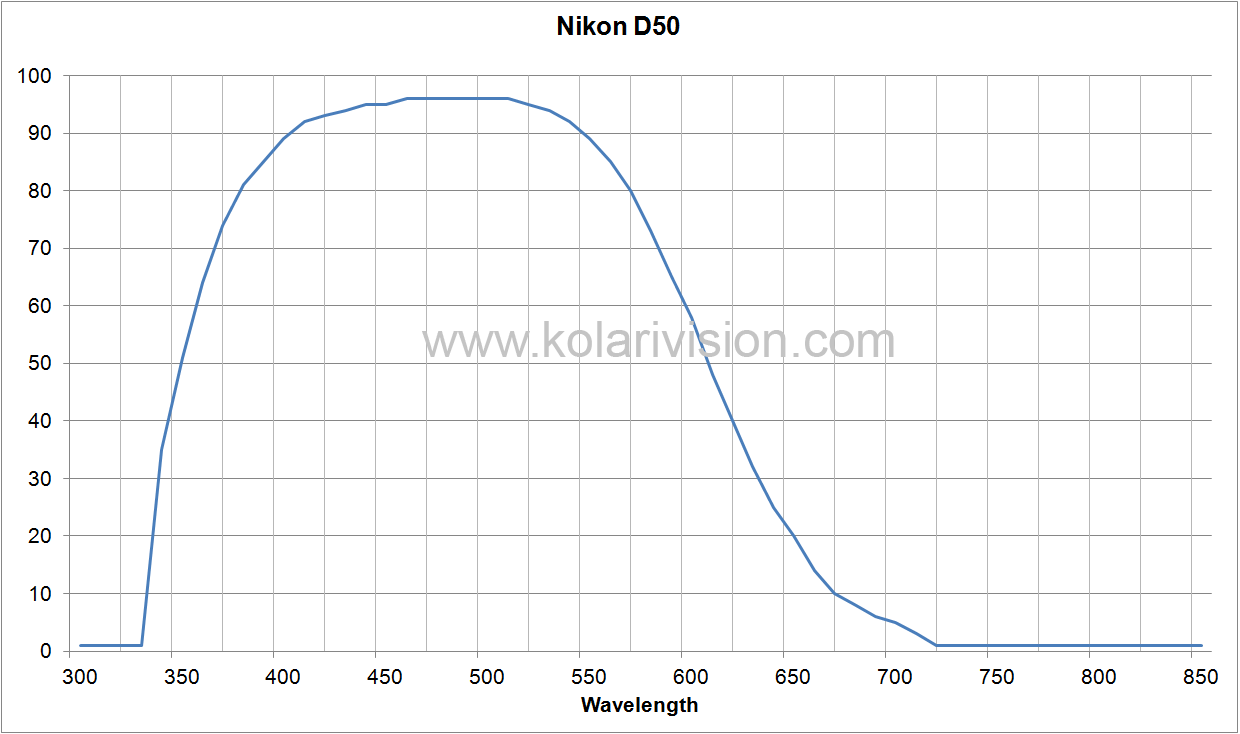 |
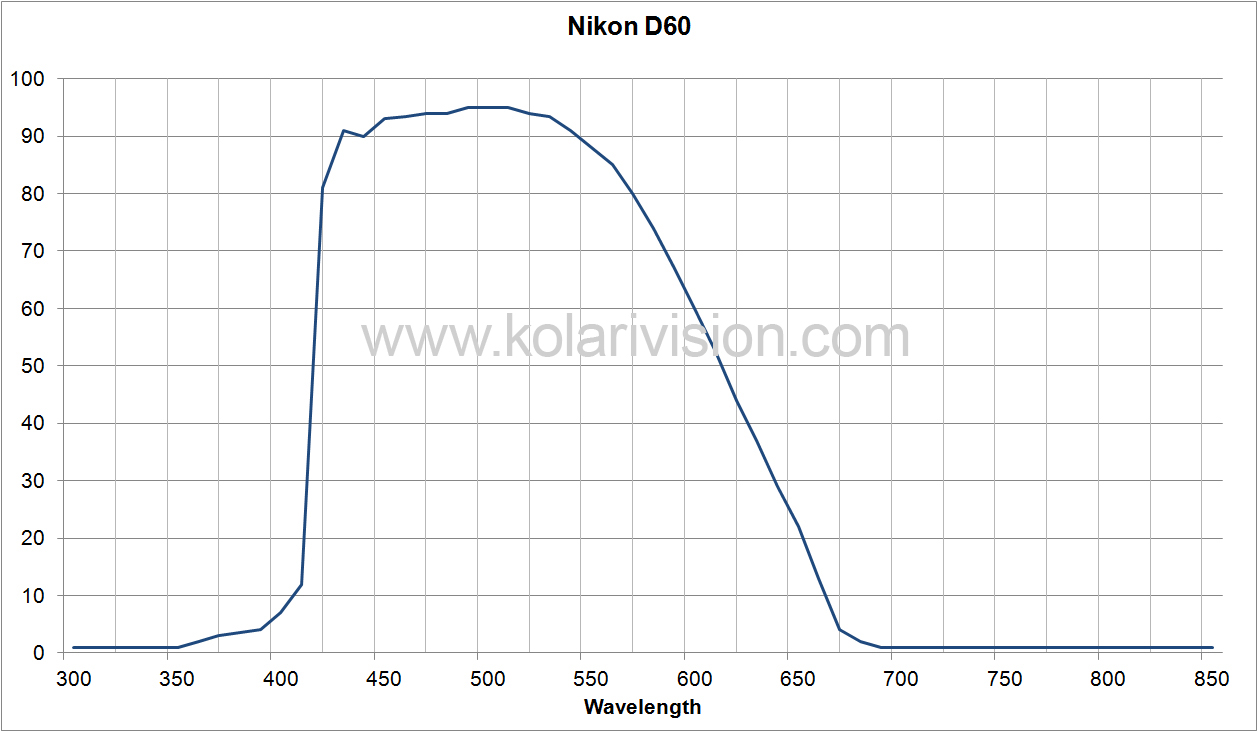 |
 |
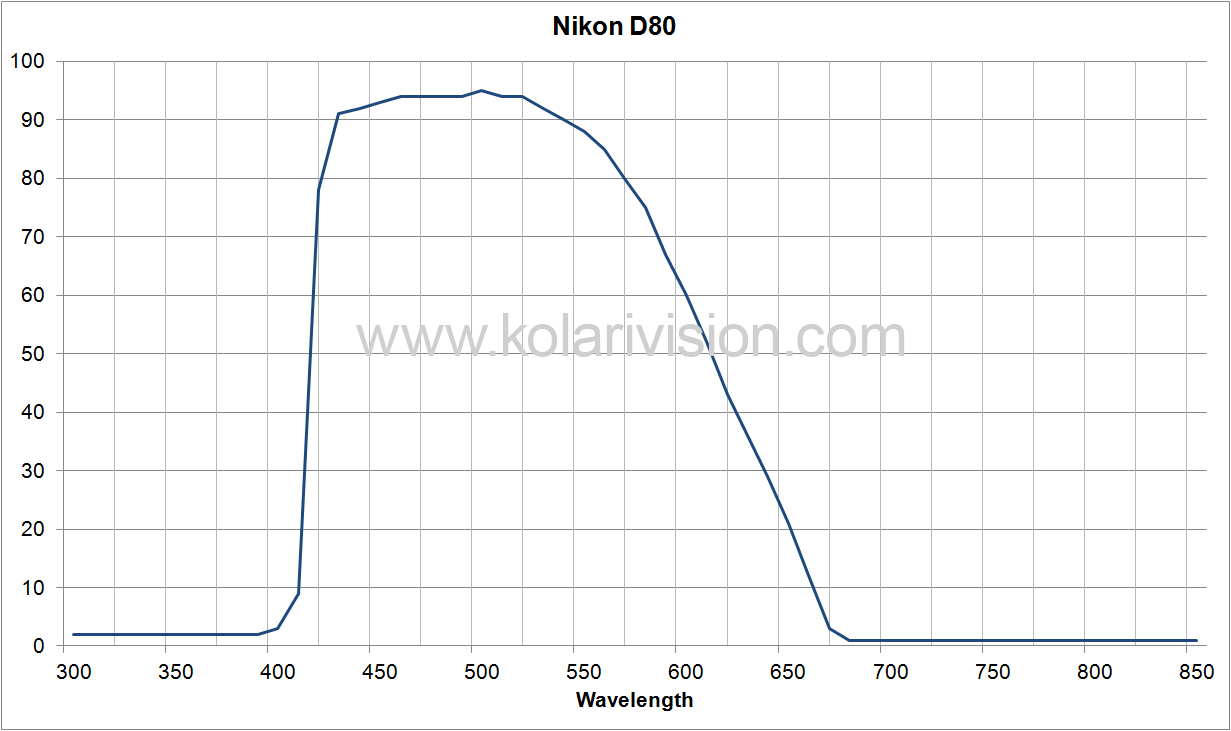 |
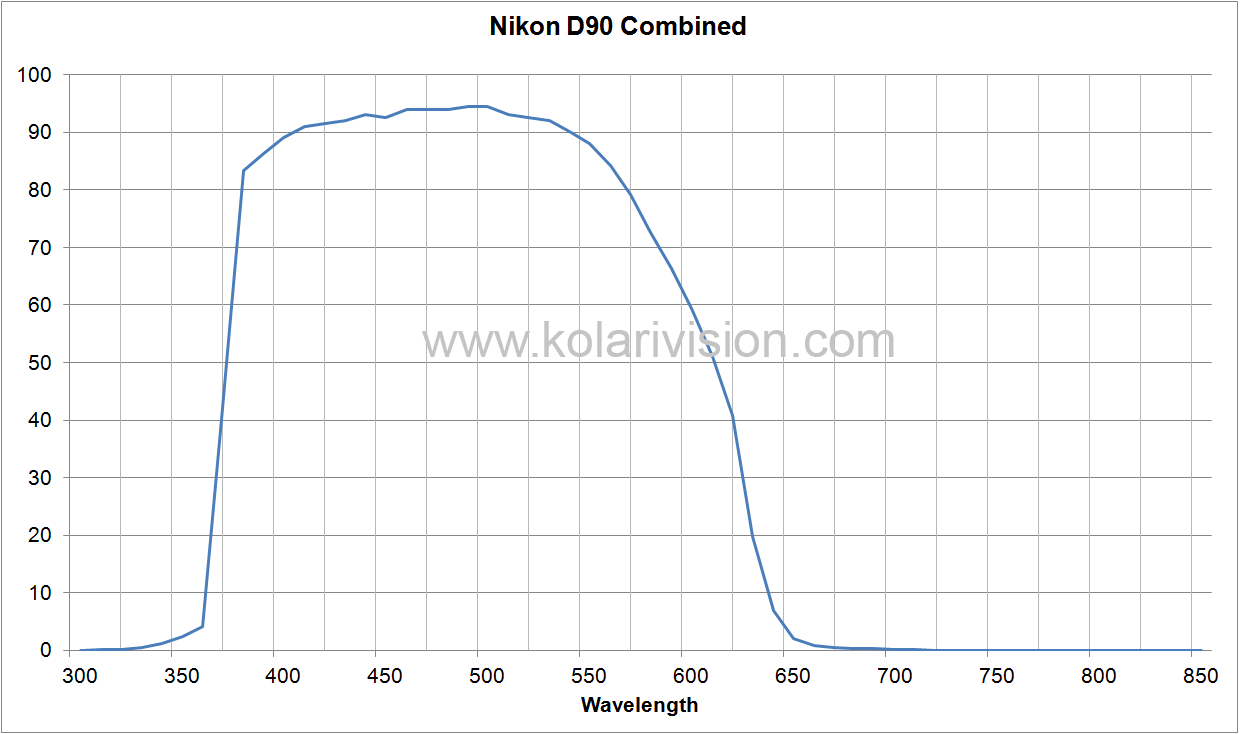 |
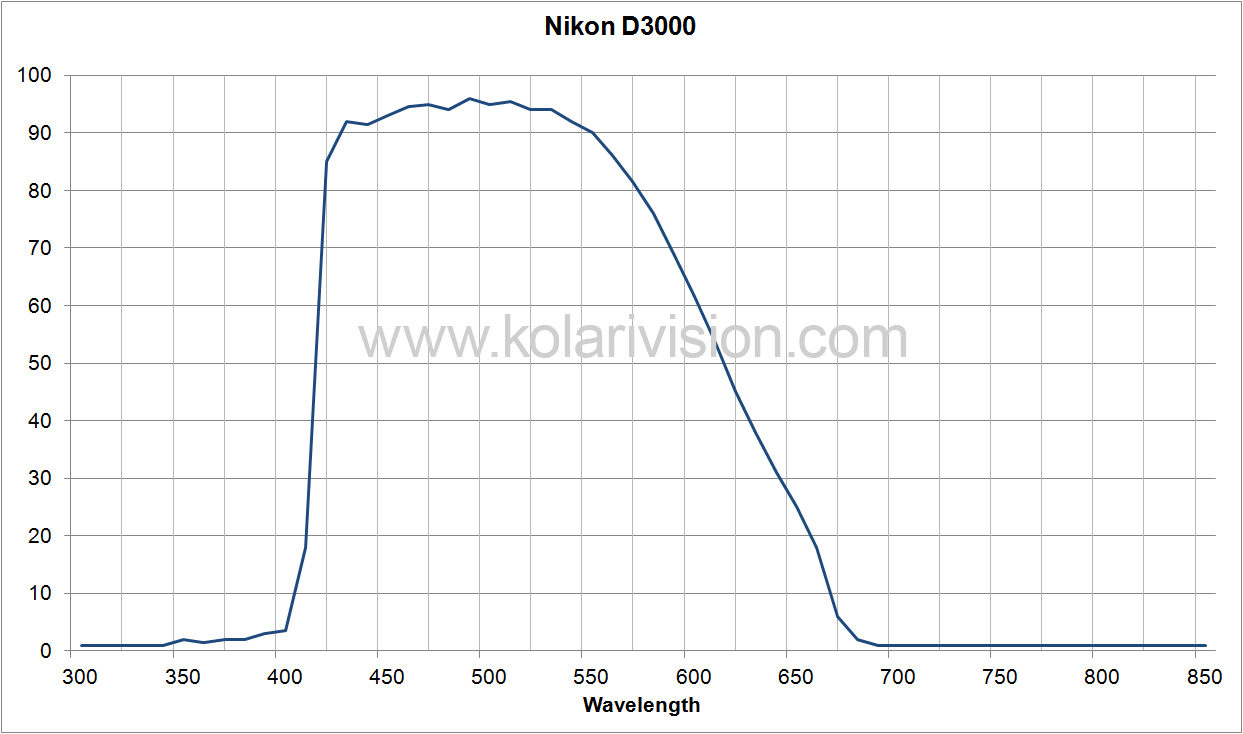 |
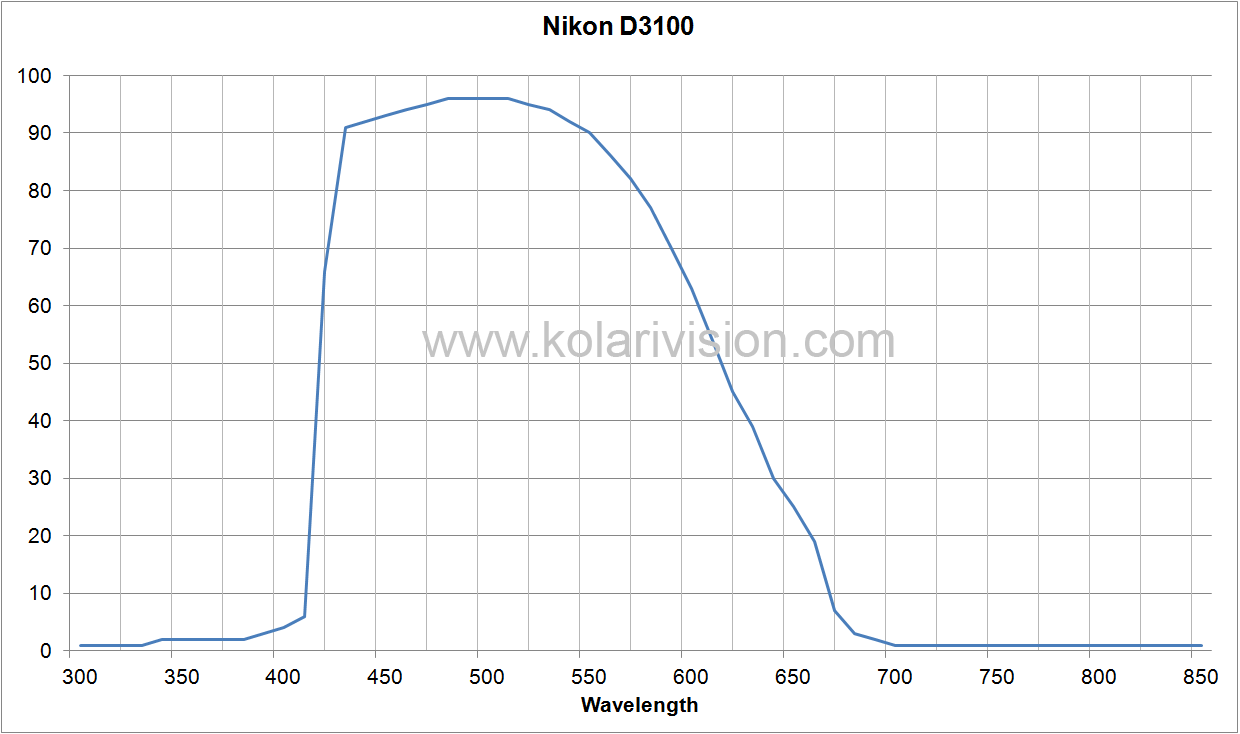 |
Canon
 |
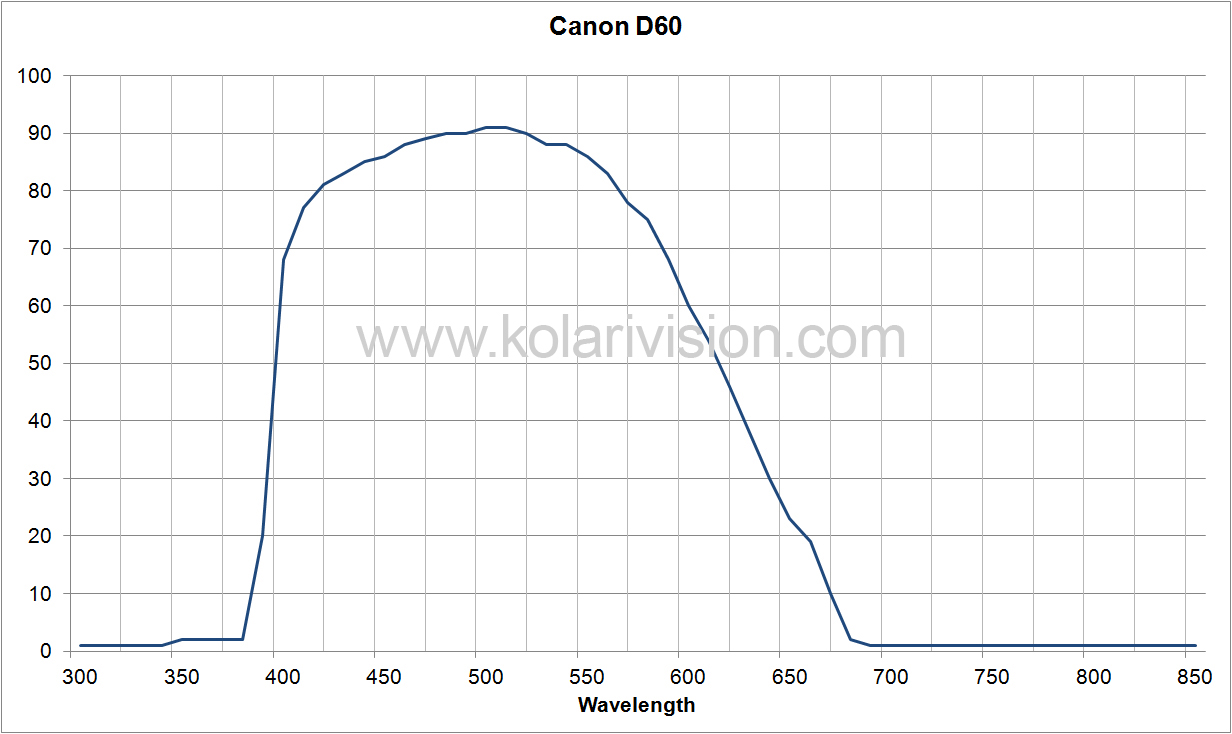 |
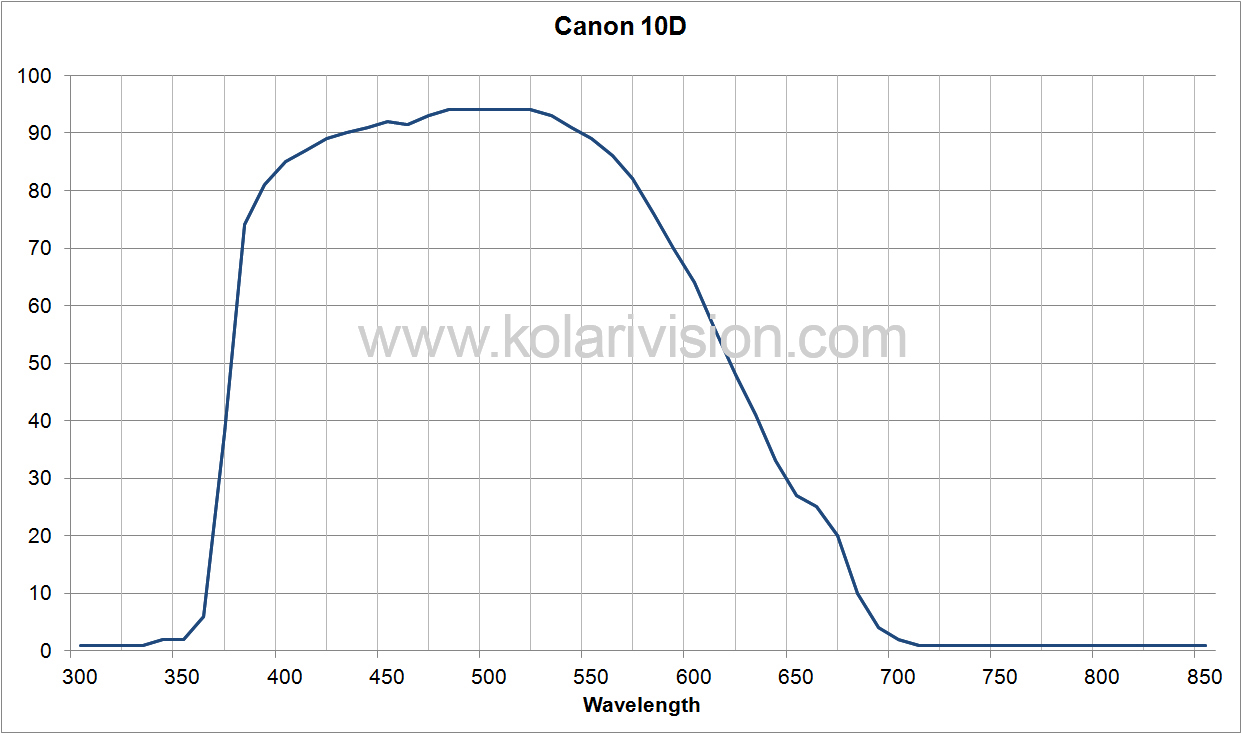 |
 |
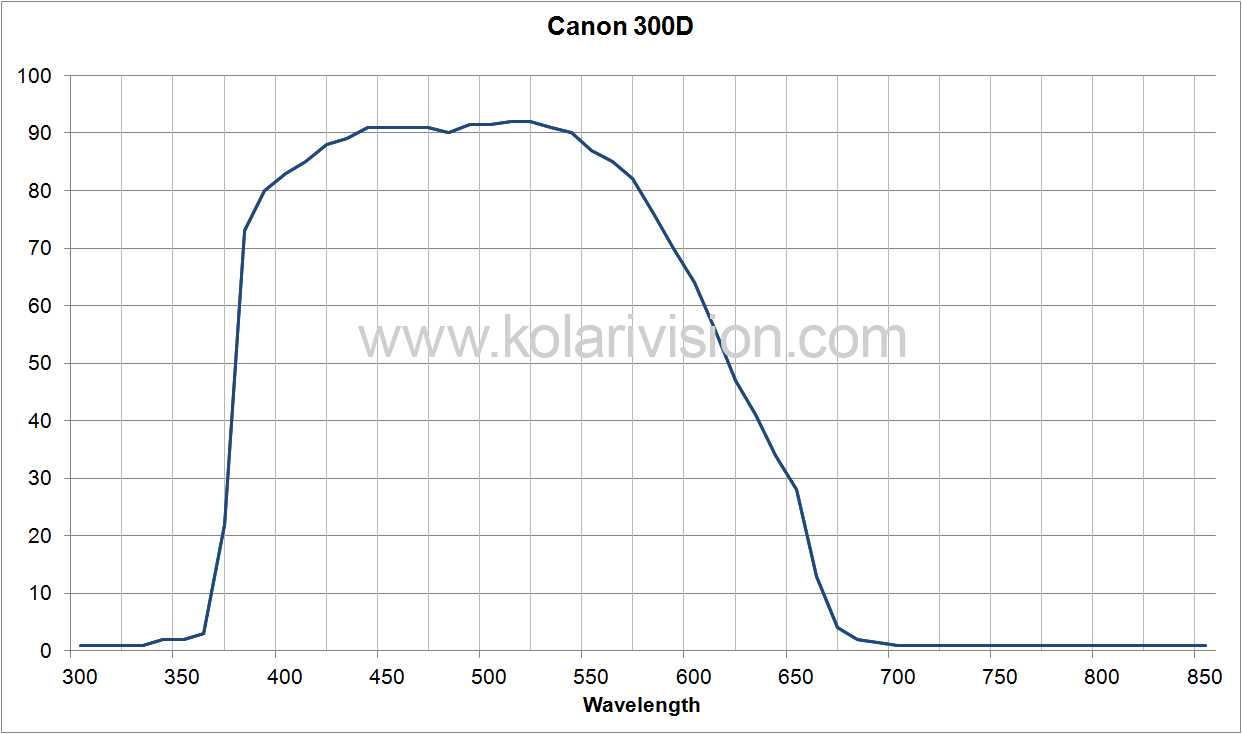 |
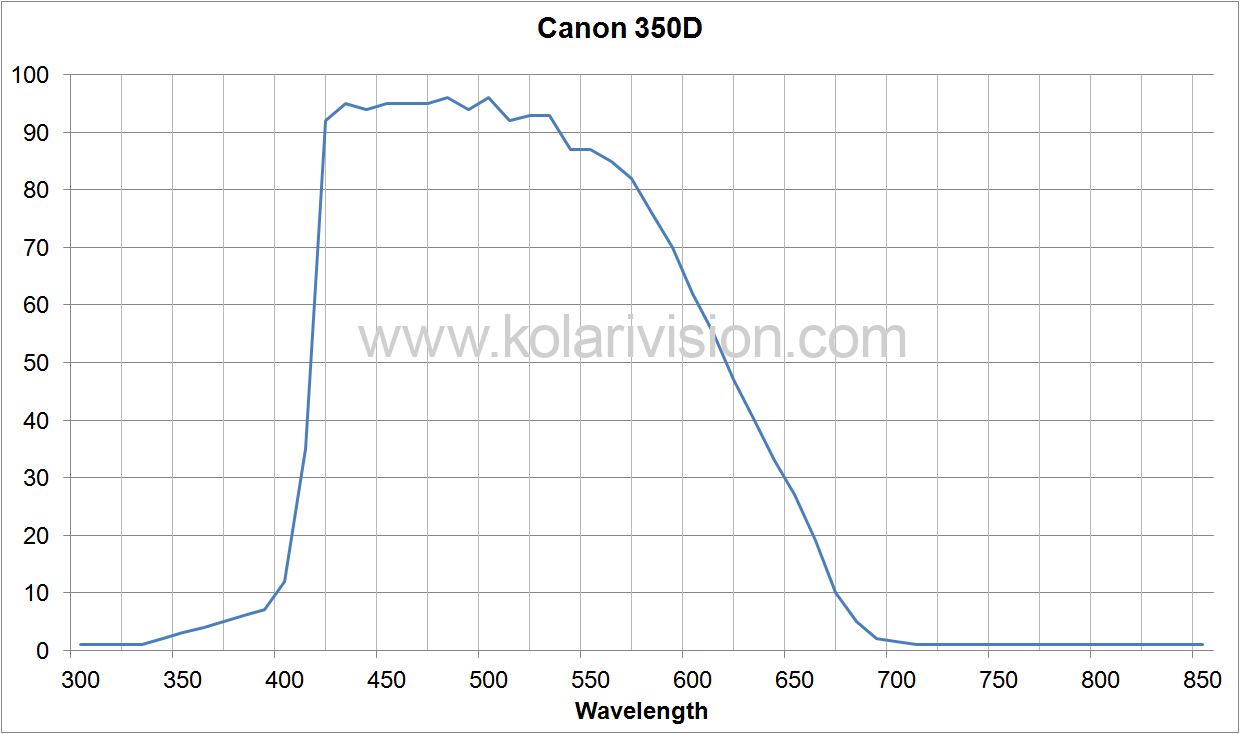 |
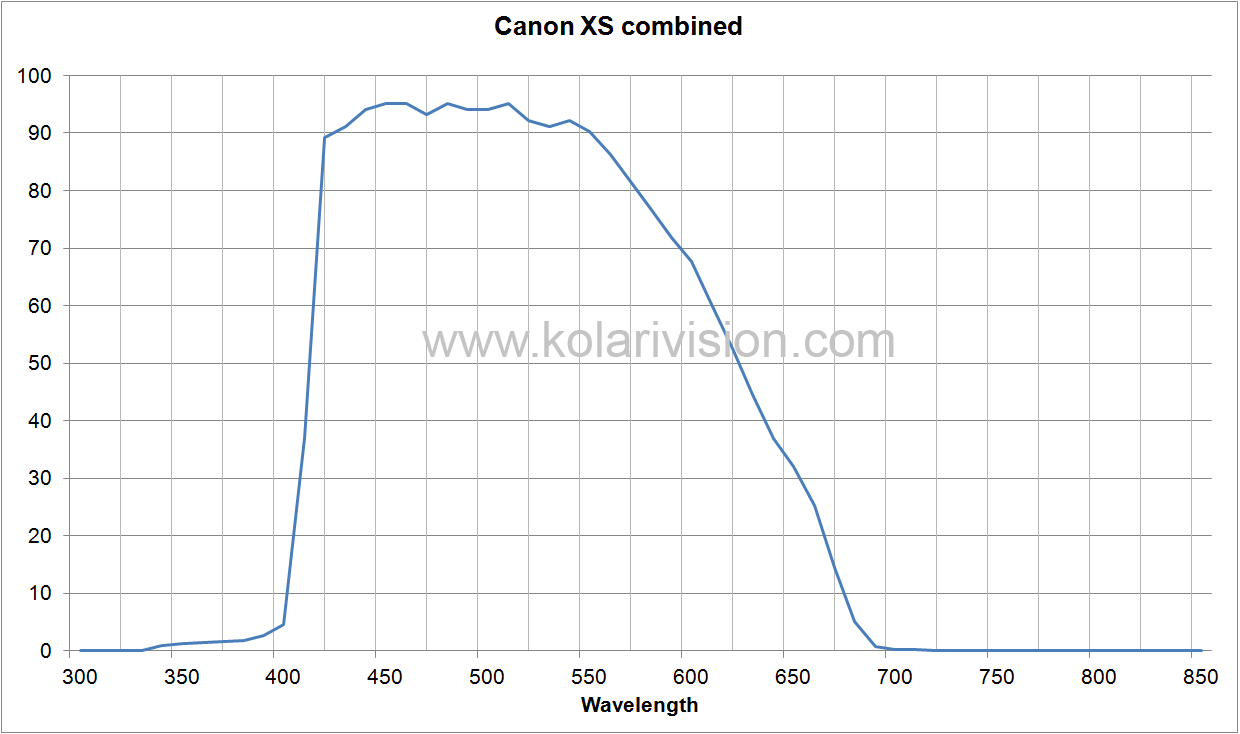 |
 |
 |
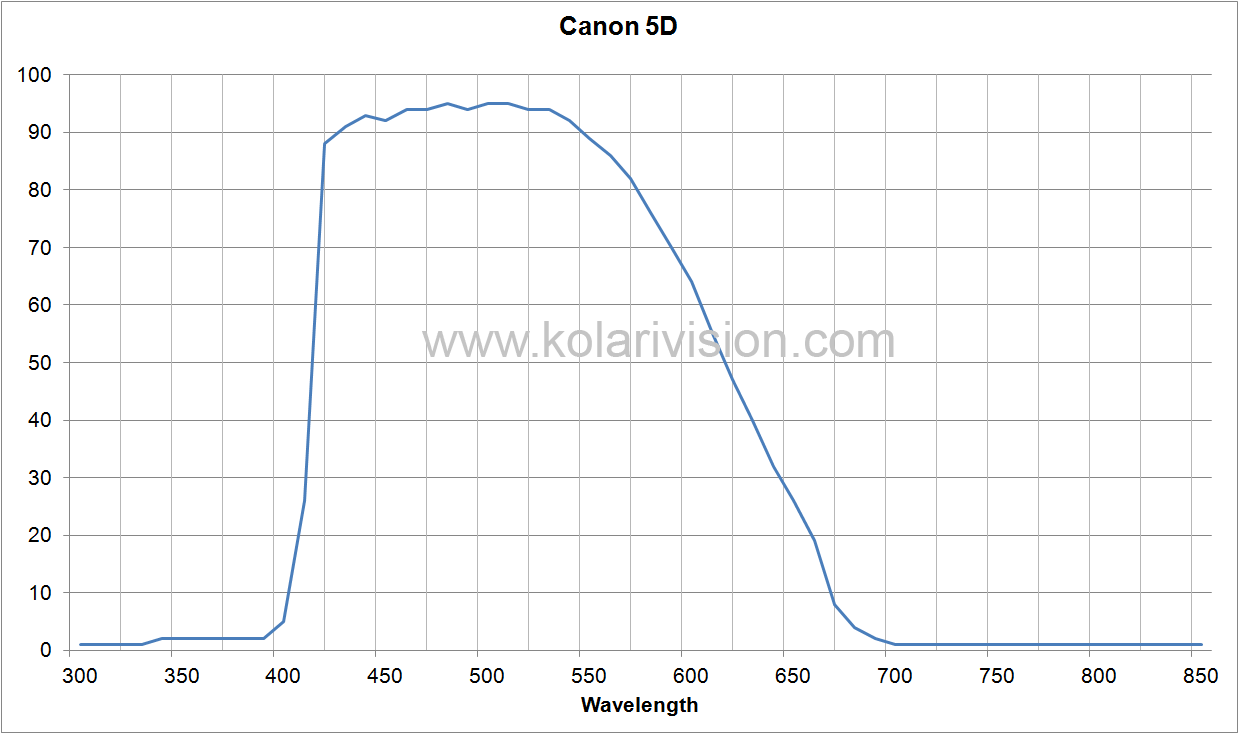 |
 |
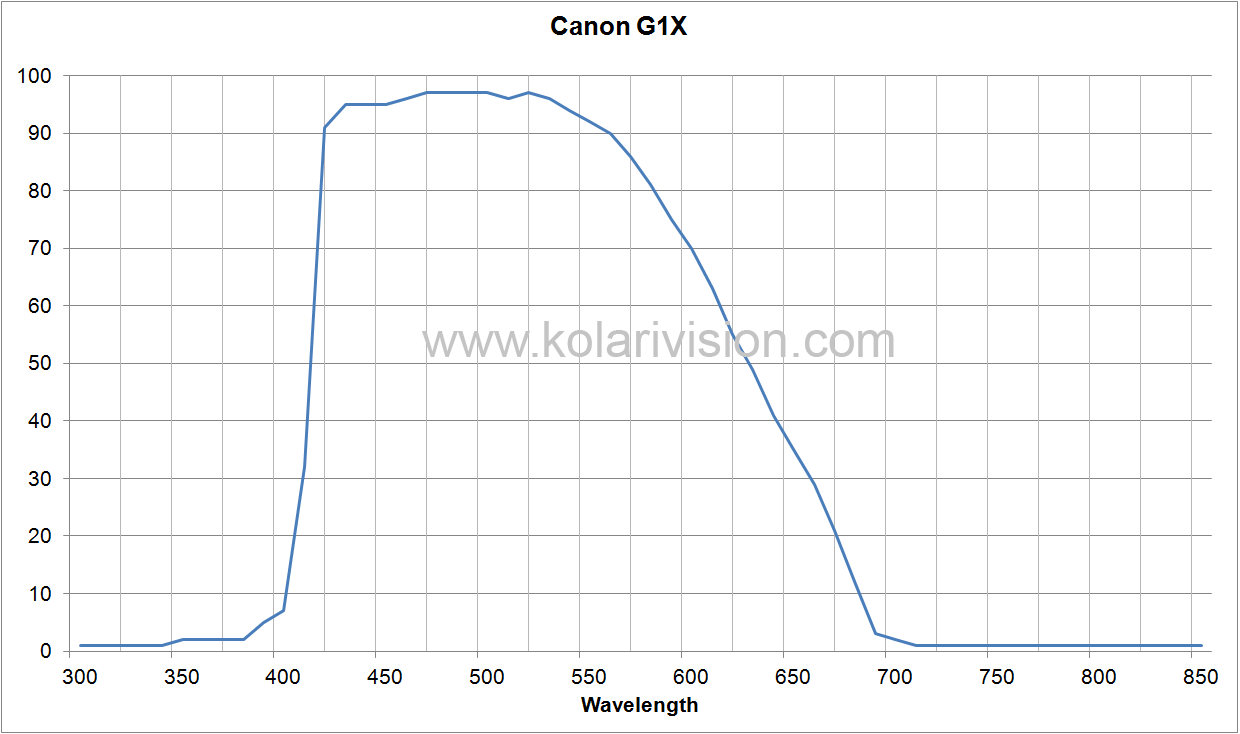 |
Panasonic Lumix
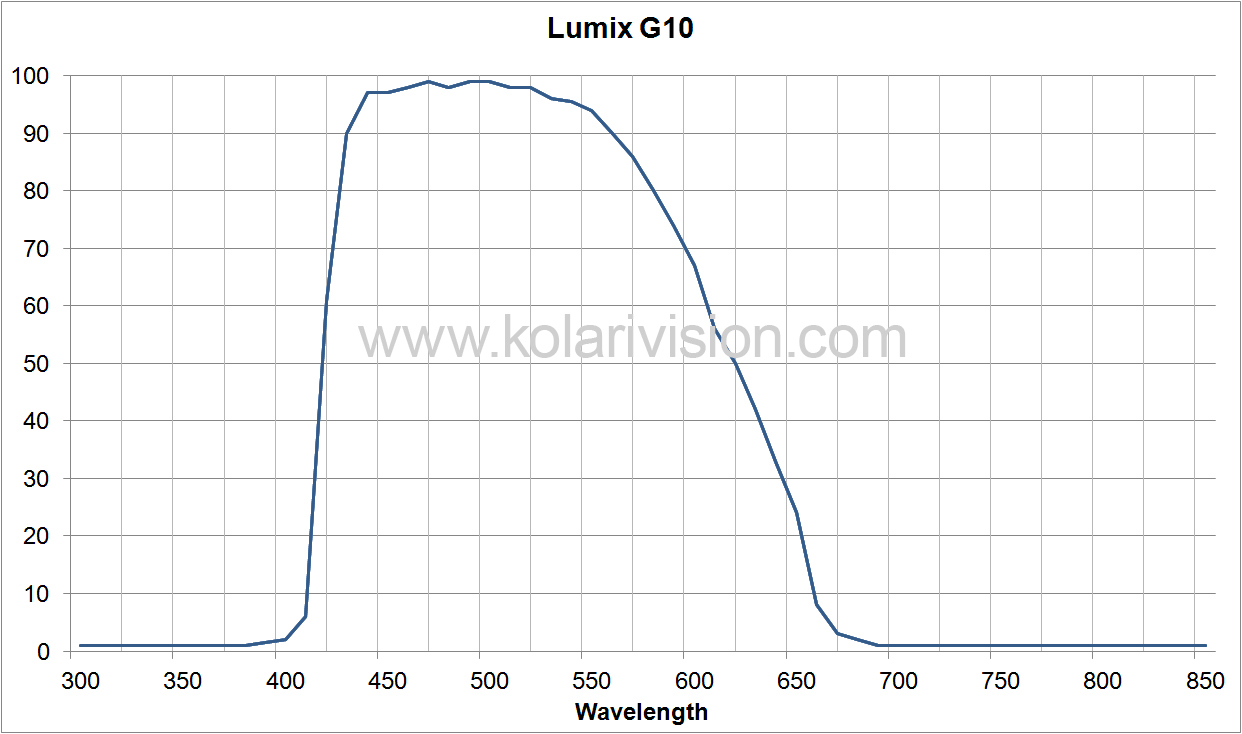 |
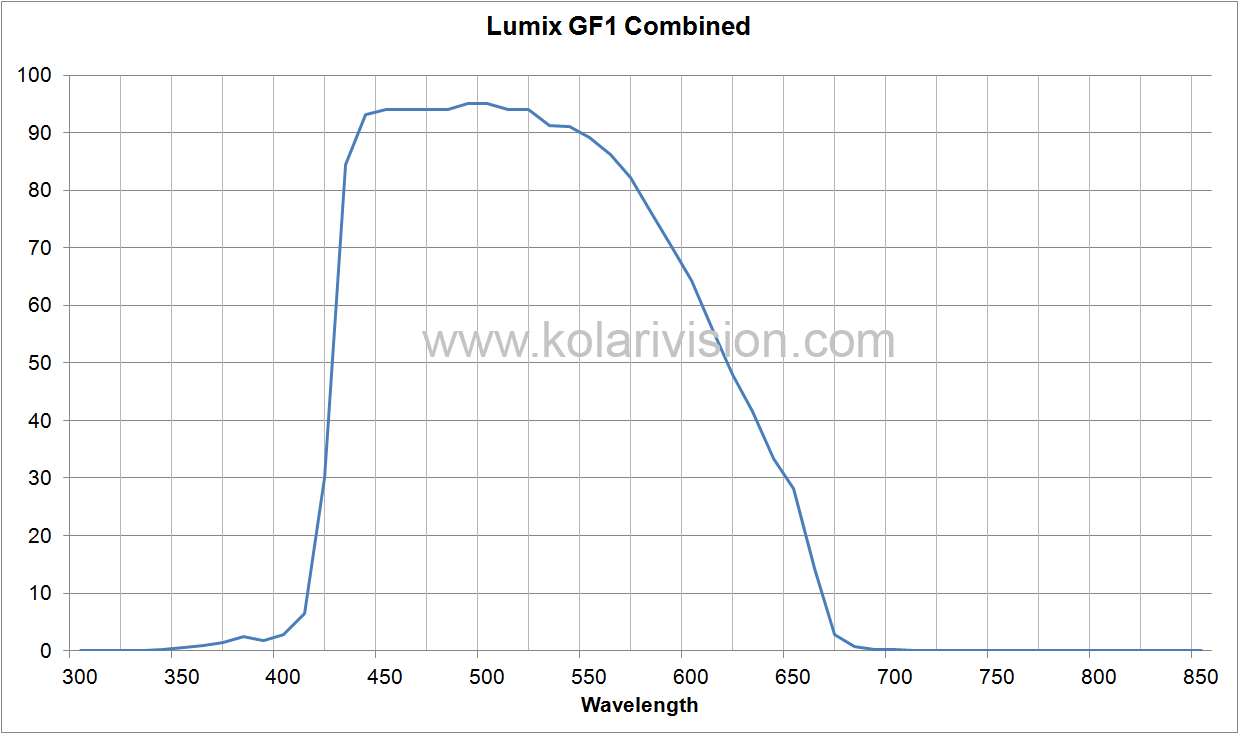 |
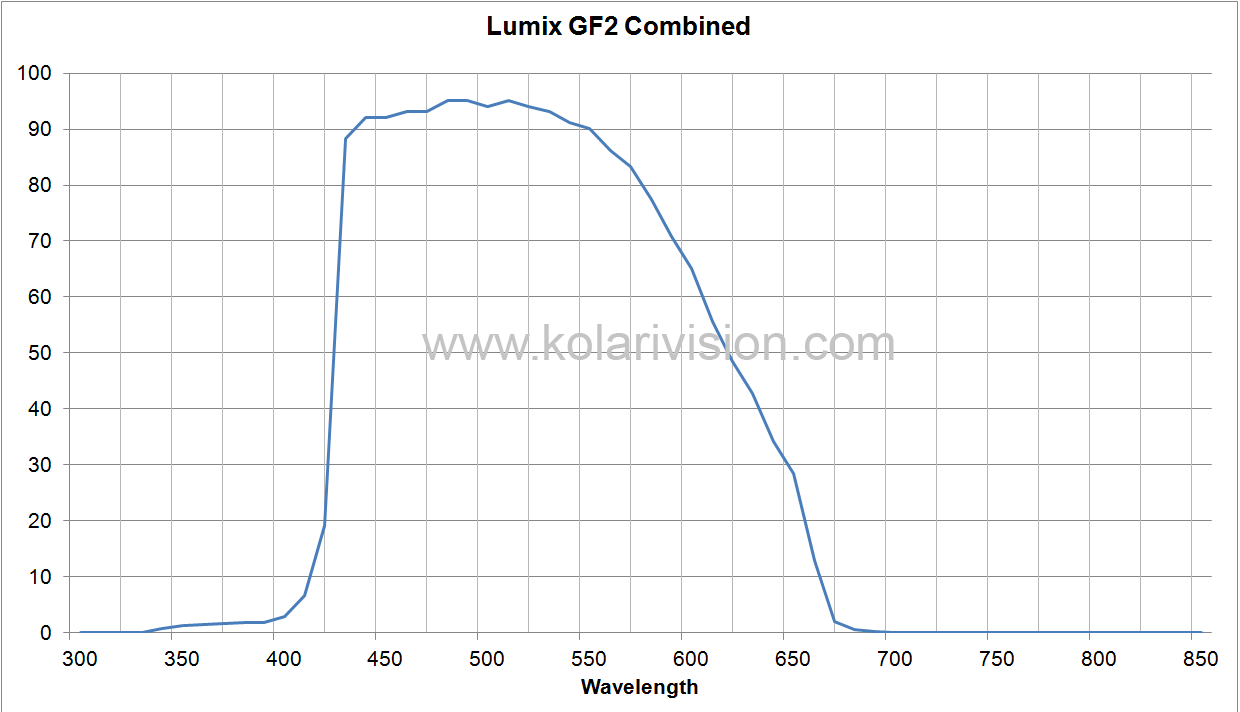 |
Olympus
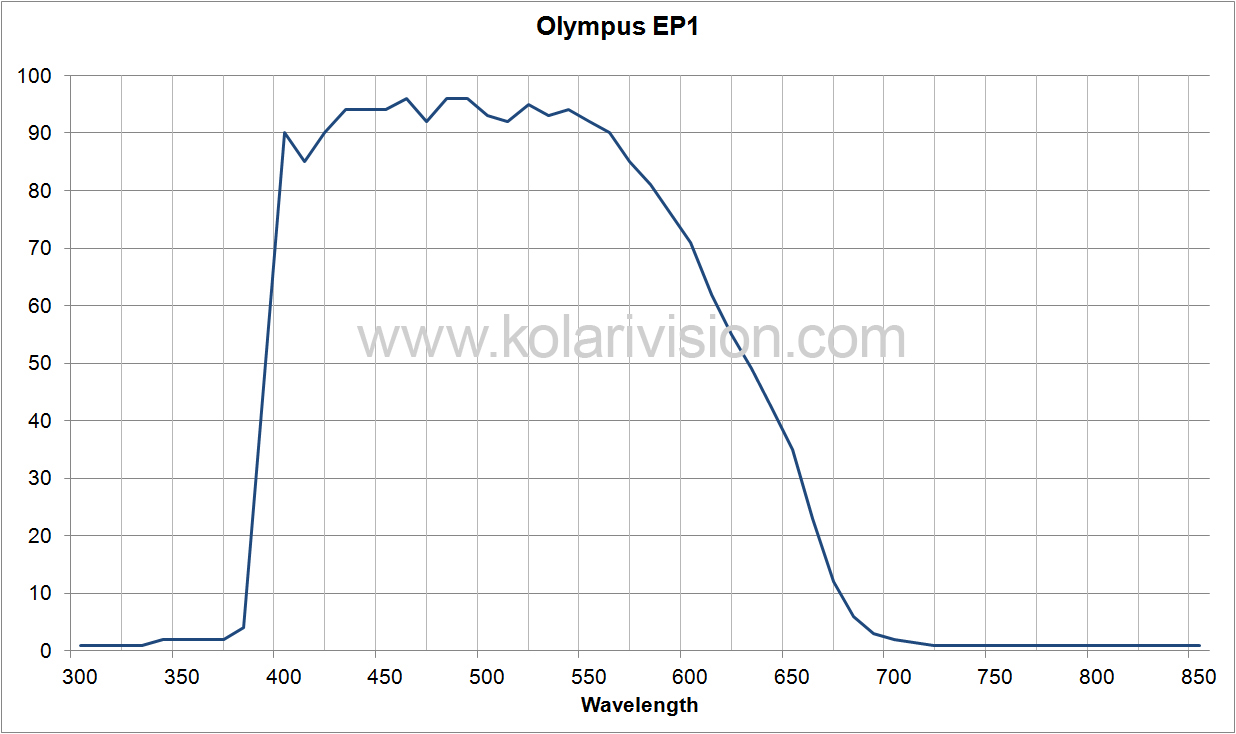 |
Pentax |
 |
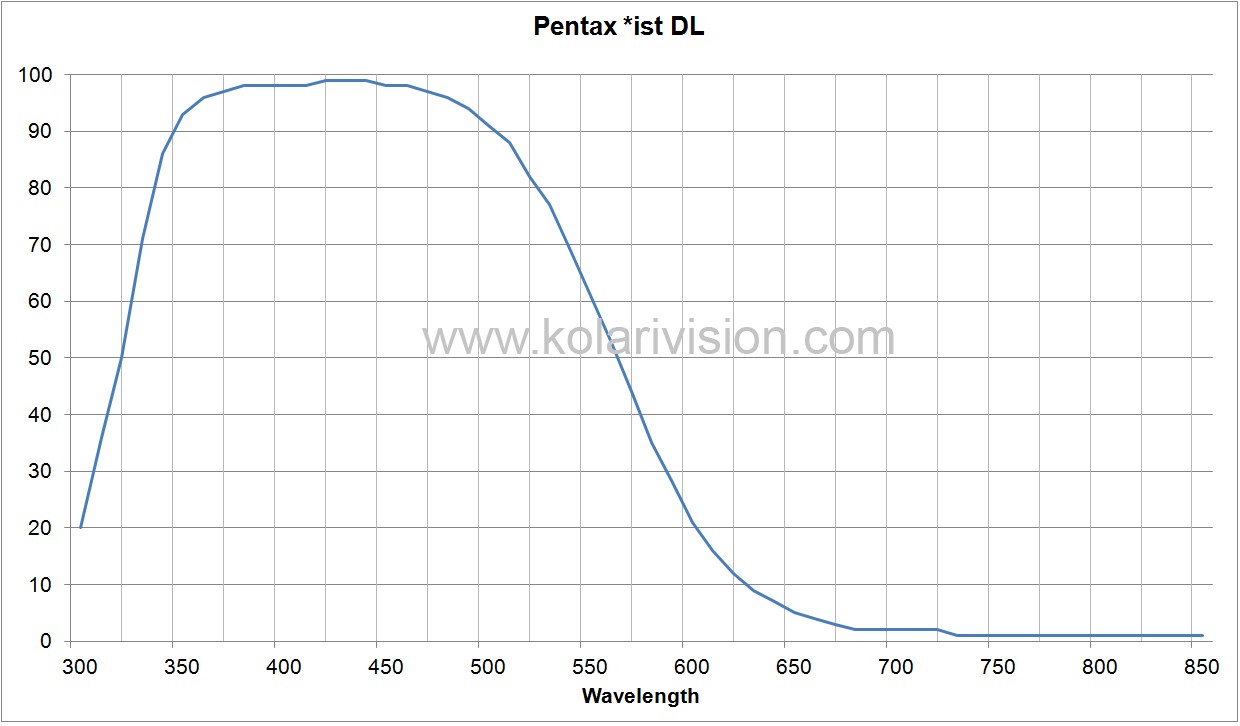 |
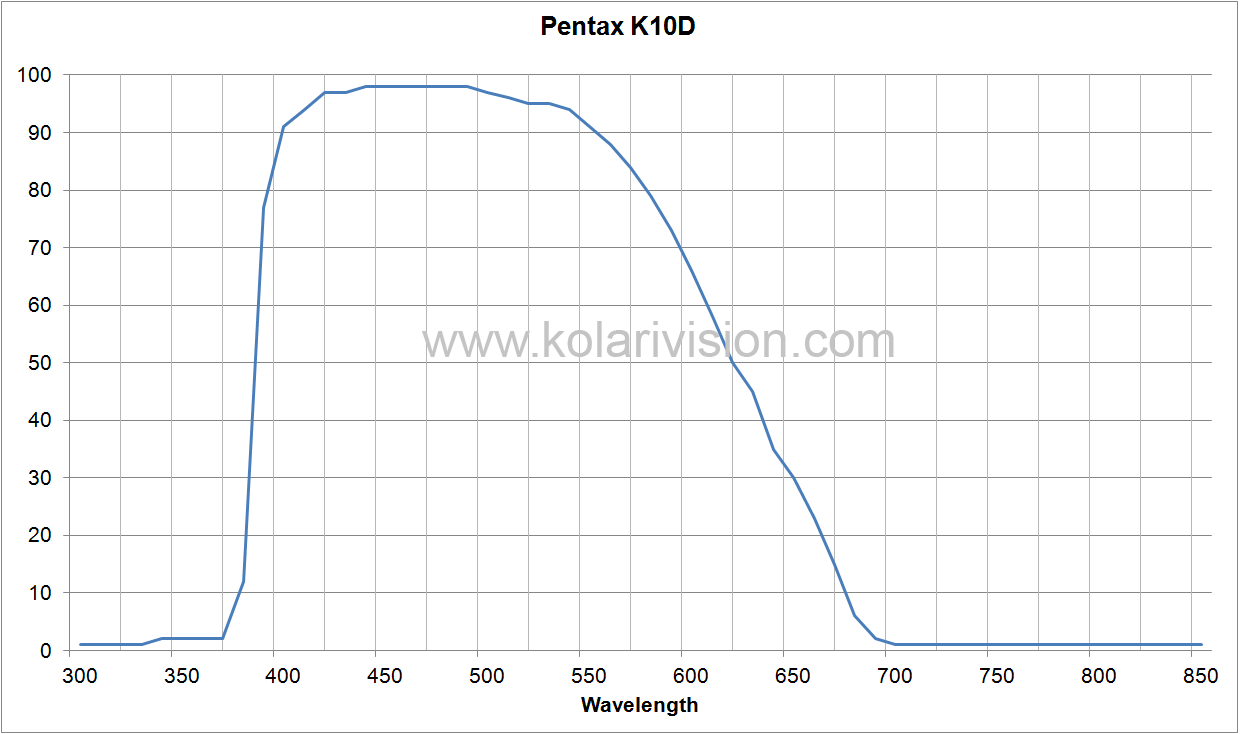 |
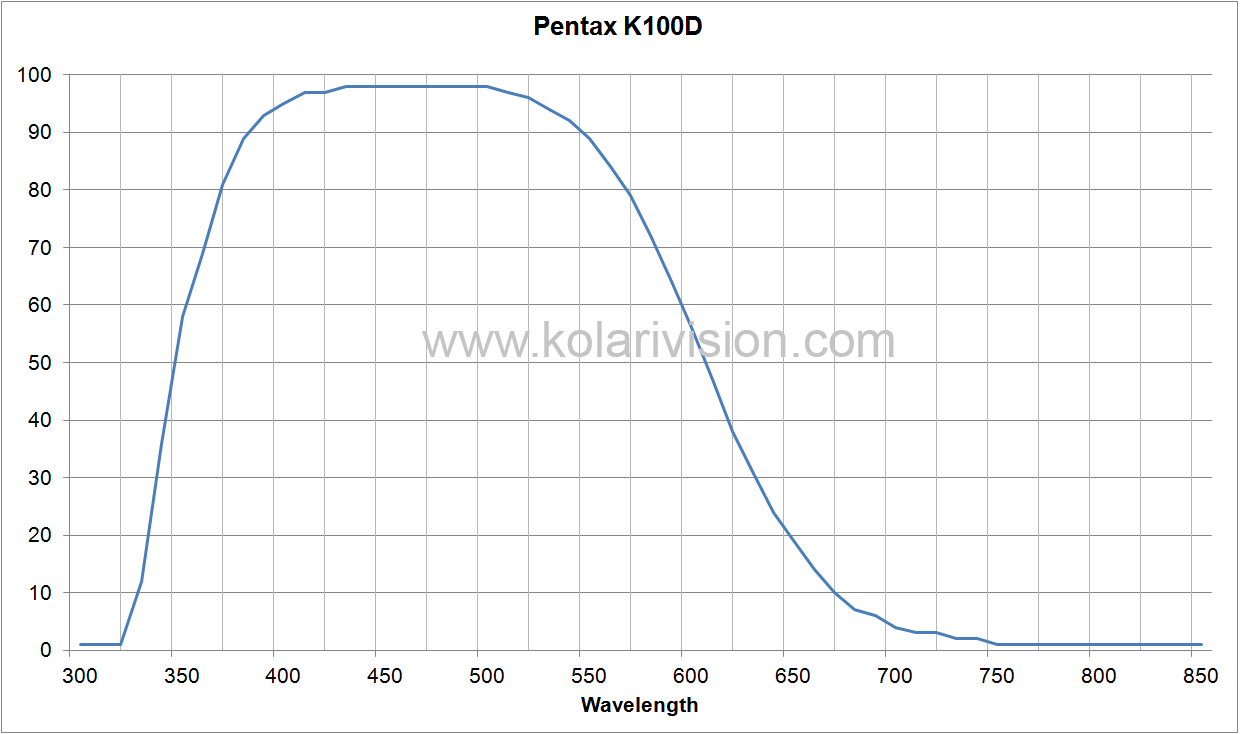 |
Fujifilm |
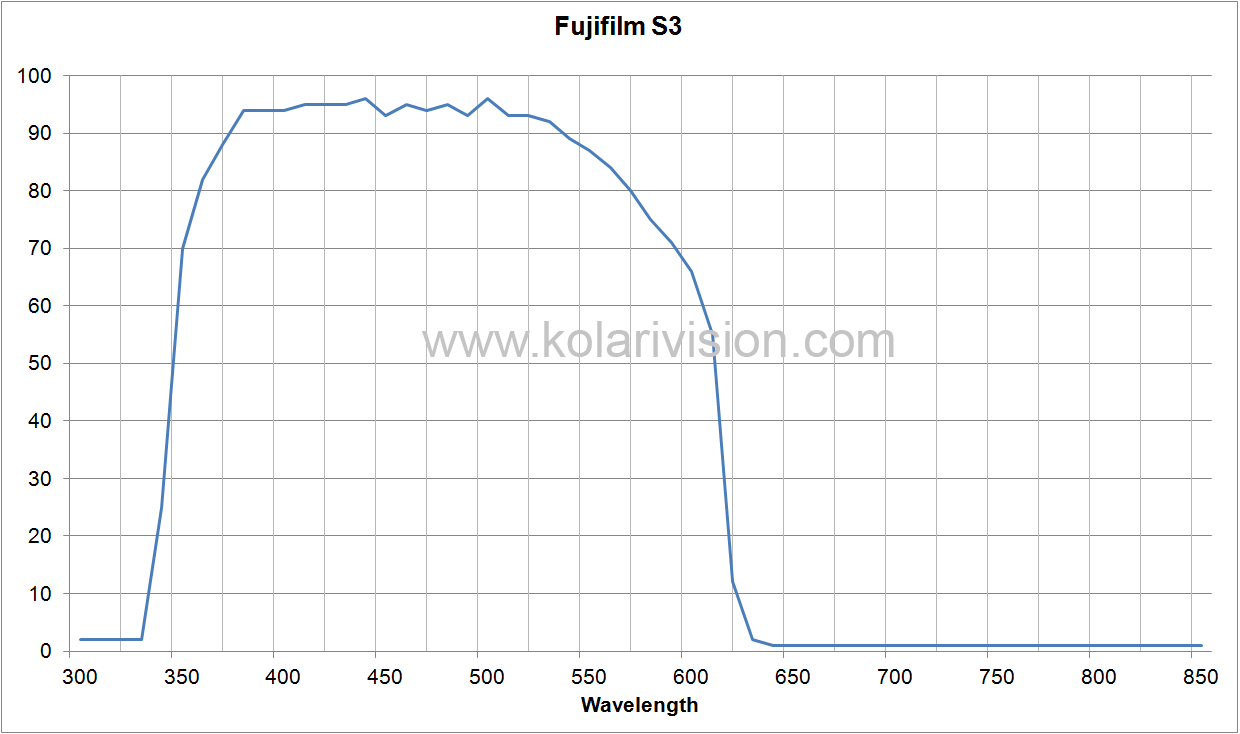 |
 |
 |
Samsung |
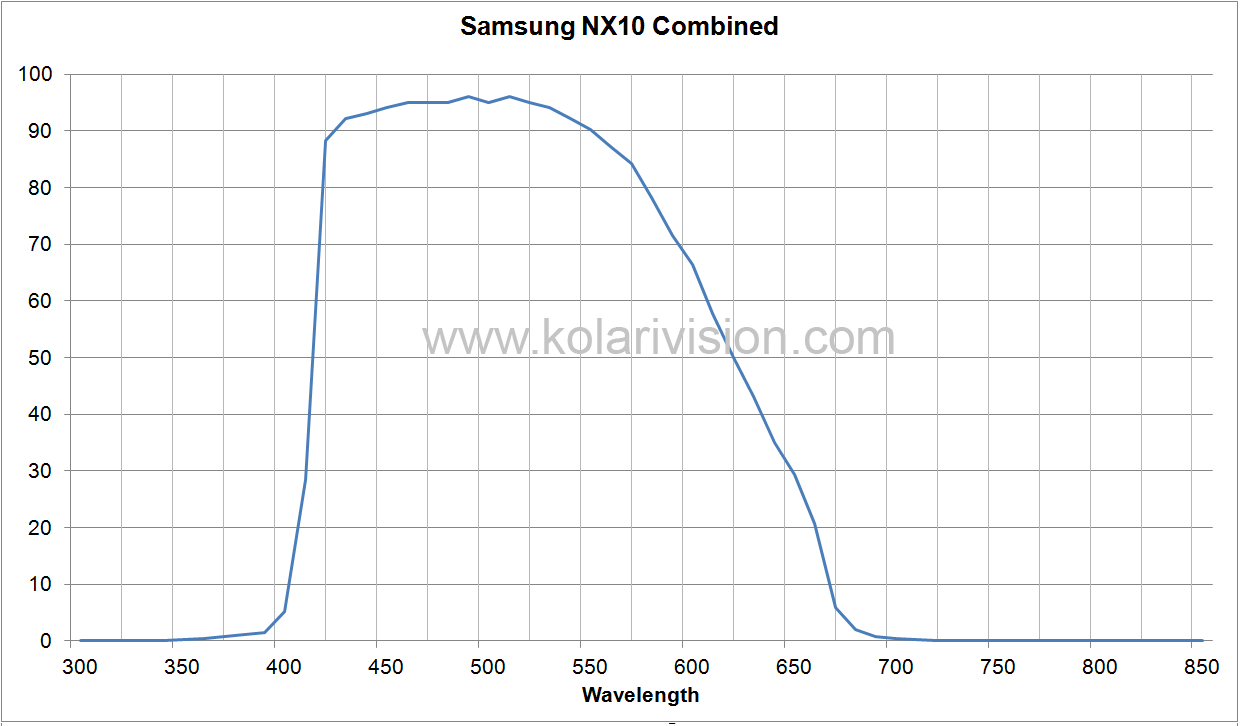 |
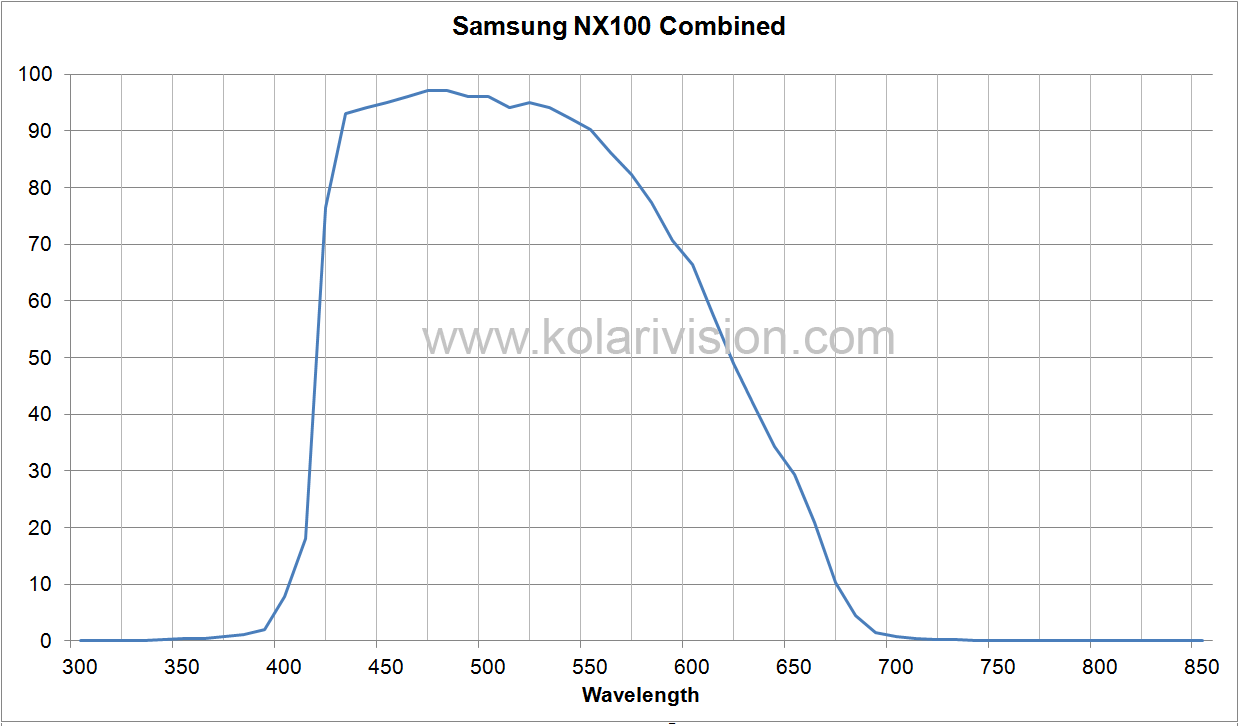 |
Sony |
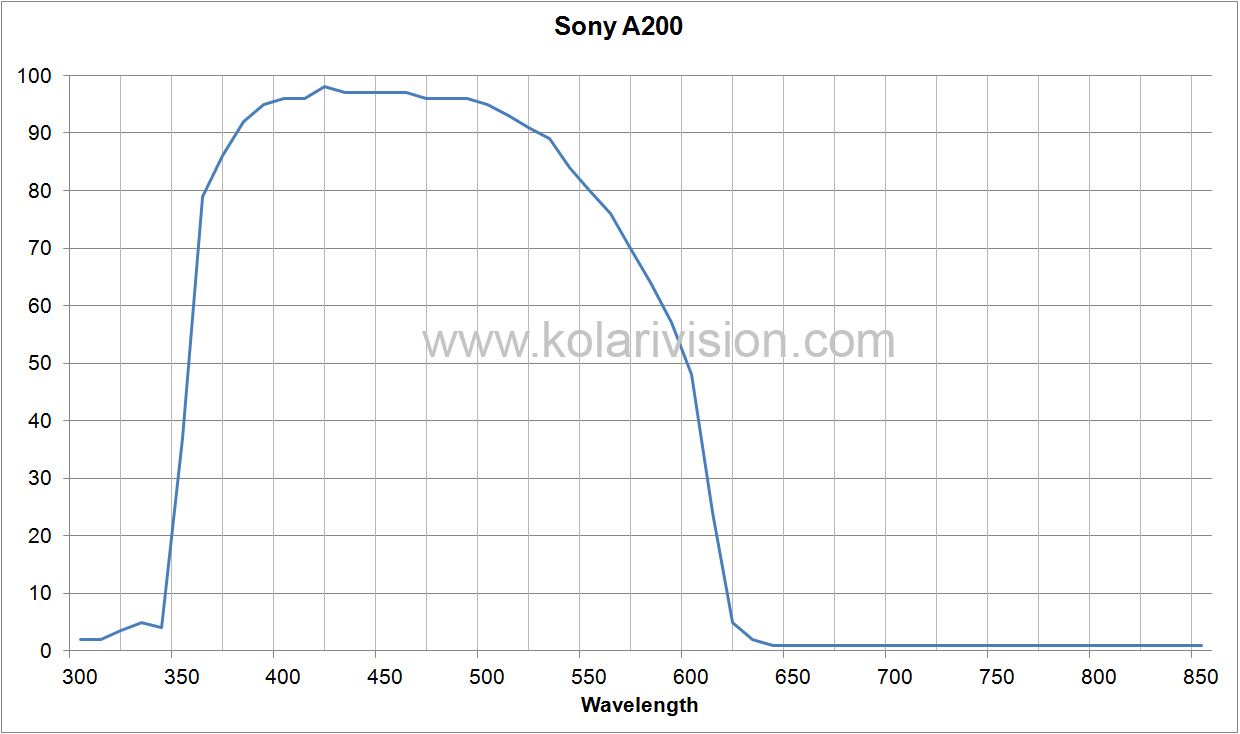 |
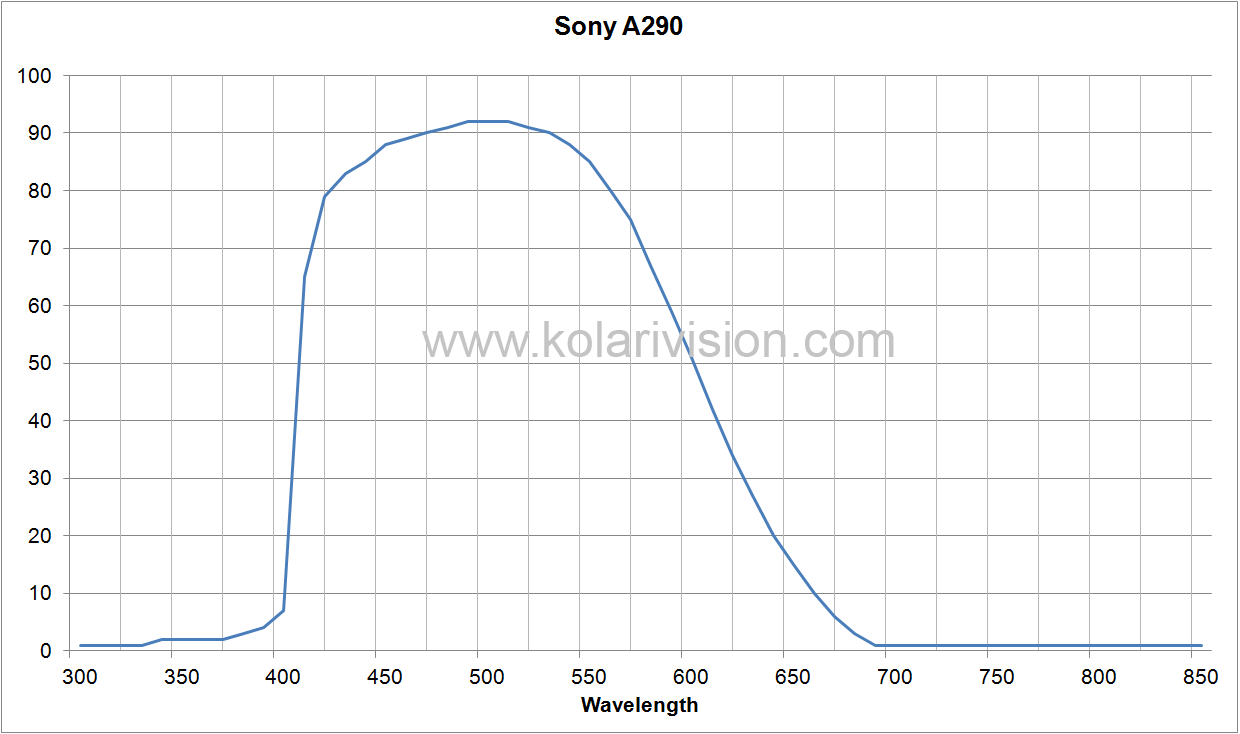 |
 |
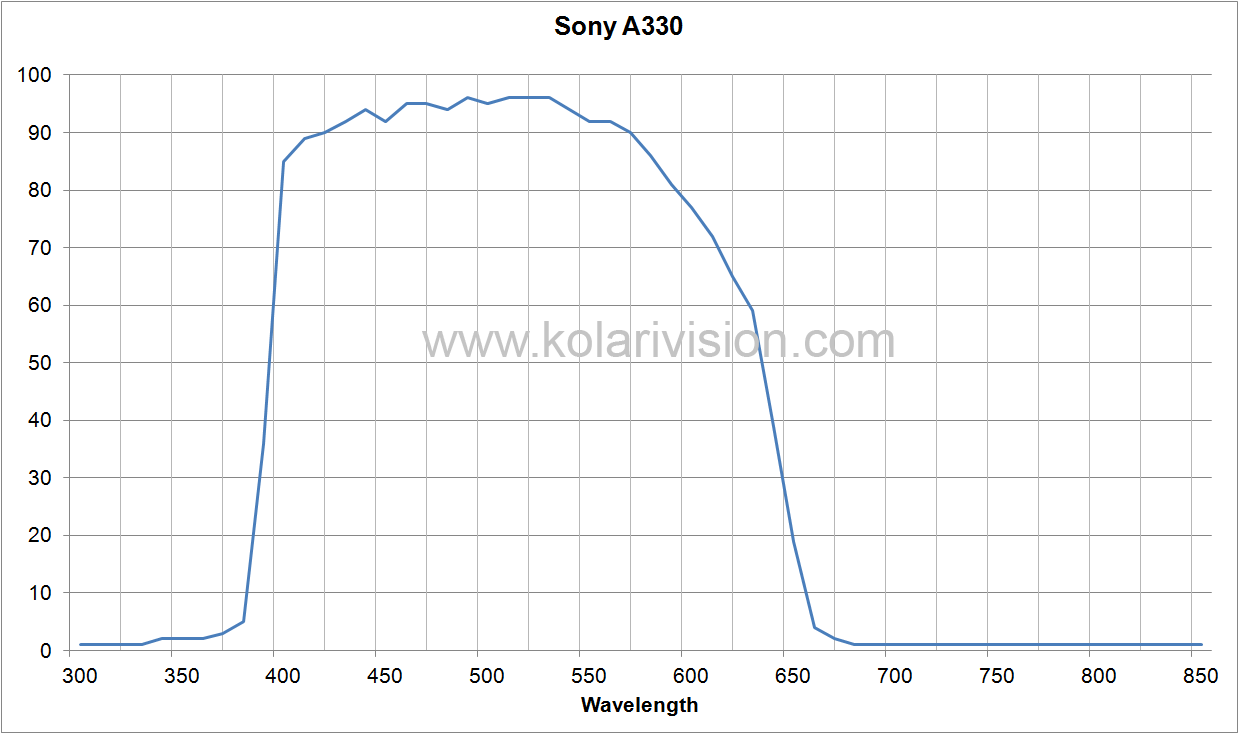 |
 |
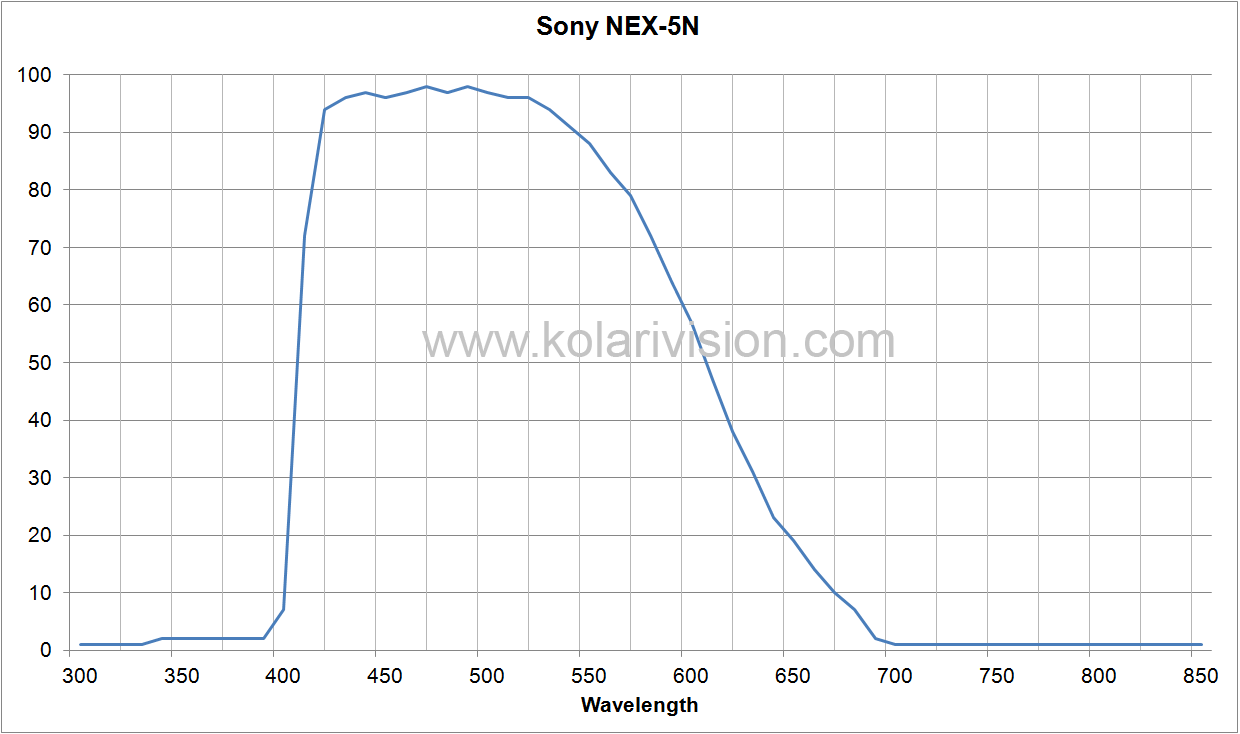 |
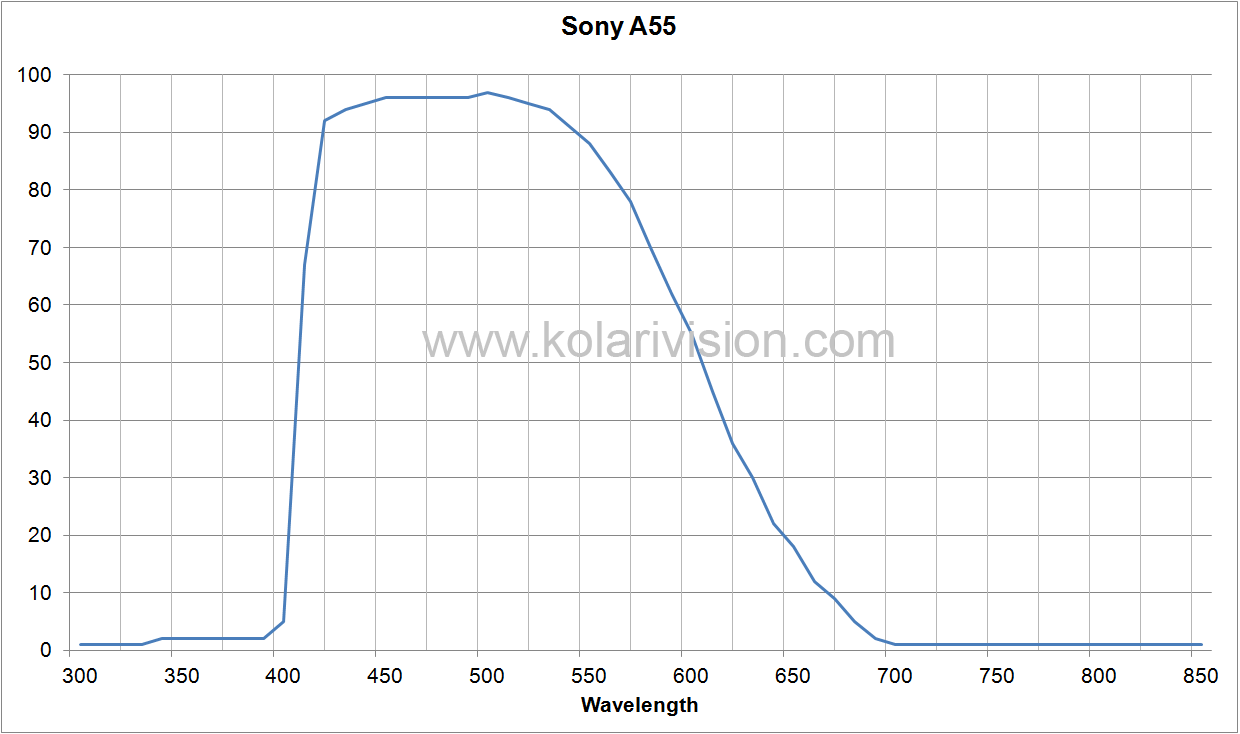 |
We make no garuntees on the accuracy of this data, provided as a reference only.

